 W
WA2 is an abbreviation for "Production Audio Technician", Audio Assistant, Second Audio Assistant, or Second Assistant Audio Engineer. Any of these three terms, or any similar term such as Mic Wrangler, may be used to describe the same set of duties.
 W
WStage combat, fight craft or fight choreography is a specialised technique in theatre designed to create the illusion of physical combat without causing harm to the performers. It is employed in live stage plays as well as operatic and ballet productions. With the advent of cinema and television the term has widened to also include the choreography of filmed fighting sequences, as opposed to the earlier live performances on stage. It is closely related to the practice of stunts and is a common field of study for actors. Actors famous for their stage fighting skills frequently have backgrounds in dance, gymnastics or martial arts training.
 W
WAn actor is a person who portrays a character in a performance. The actor performs "in the flesh" in the traditional medium of the theatre or in modern media such as film, radio, and television. The analogous Greek term is ὑποκριτής (hupokritḗs), literally "one who answers". The actor's interpretation of their role—the art of acting—pertains to the role played, whether based on a real person or fictional character. This can also be considered an "actor's role," which was called this due to scrolls being used in the theaters. Interpretation occurs even when the actor is "playing themselves", as in some forms of experimental performance art.
 W
WAn actor-manager is a leading actor who sets up their own permanent theatrical company and manages the business, sometimes taking over a theatre to perform select plays in which they usually star. It is a method of theatrical production used consistently since the 16th century, particularly common in 19th-century England and the United States.
 W
WIn theatre, a carpenter is a stagehand who builds sets and stage elements. They usually are hired by the production manager, crew chief or technical director and in some less common cases they may be hired by director or producer. They are usually paid by the hour.
 W
WChoreography is the art or practice of designing sequences of movements of physical bodies in which motion, form, or both are specified. Choreography may also refer to the design itself. A choreographer is one who creates choreographies by practicing the art of choreography, a process known as choreographing. Choreography is used in a variety of fields, including ballet, opera, musical theatre, cheerleading, cinematography, gymnastics, fashion shows, ice skating, marching band, show choir, theatre, synchronized swimming, cardistry, video game production, and animated art. In the performing arts, choreography applies to human movement and form. In dance, choreography is also known as dance choreography or dance composition.
 W
WCostume coordination is a method of dressing actors, employees or a person or group for theatrical productions and any venue requiring a fully realized character. It consists of pulling or renting existing stock clothing and costumes, altering them as needed to be used as stage clothes in a theatrical production, oversee their use, cleaning and eventual return to storage or rental company. Just as with costume design, the costume coordinator creates the overall appearance of the characters, but with the use of on hand items, including accessories. Sometimes coordinators may have a small budget to augment the existing stock or alter it for production needs.
 W
WCostume design is the creation of clothing for the overall appearance of a character or performer. Costume may refer to the style of dress particular to a nation, a class, or a period. In many cases, it may contribute to the fullness of the artistic, visual world which is unique to a particular theatrical or cinematic production. The most basic designs are produced to denote status, provide protection or modesty, or provide visual interest to a character. Costumes may be for a theater, cinema, or musical performance but may not be limited to such. Costume design should not be confused with costume coordination which merely involves altering existing clothing, although both create stage clothes.
 W
WDance is a performing art form consisting of sequences of movement, either improvised or purposefully selected. This movement has aesthetic and often symbolic value. Dance can be categorized and described by its choreography, by its repertoire of movements, or by its historical period or place of origin.
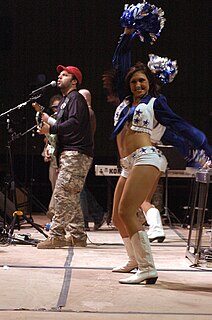 W
WA backup dancer also known as background dancer is a performer who dances with or behind the lead performers in a live musical act or in a music video. Their movements provide a visual symmetry and rhythm to accompany the music.
 W
WIn theatre, an electrician is a person who works with the various aspects of lighting. Some of the positions among electricians include the lighting supervisor, master electrician, deck electrician, light board operator, moving light programmer, followspot operator, as well as simply electricians. This group is generally known as the "Electrics" Department or LX Department.
 W
WIn the performing arts, front of house (FOH) is the part of a performance venue that is open to the public. In theatres and live music venues, it consists of the auditorium and foyers, as opposed to the stage and backstage areas. In a theatre, the front of house manager is responsible for welcoming guests, refreshments, and making sure the auditorium is set out properly.
 W
WKuroko are stagehands in traditional Japanese theatre, who dress all in black.
 W
WThe light board operator or moving light programmer, is the electrician who operates and/or programs the light board. Depending on the scale and type of production, the board op may be responsible for conventional or automated lighting fixtures, as well as practicals and, in some instances, controlling video as well.
 W
WIn theatre, a lighting designer works with the director, choreographer, set designer, costume designer, and sound designer to create the lighting, atmosphere, and time of day for the production in response to the text, while keeping in mind issues of visibility, safety, and cost. The LD also works closely with the stage manager or show control programming, if show control systems are used in that production. Outside stage lighting, the job of a Lighting Designer can be much more diverse and they can be found working on rock and pop tours, corporate launches, art installations, or lighting effects at sporting events.
 W
WA make-up or makeup artist (MUA) is an artist whose medium is the human body, applying makeup and prosthetics on others for theatre, television, film, fashion, magazines and other similar productions including all aspects of the modeling industry. Awards given for this profession in the entertainment industry include the Academy Award for Best Makeup and Hairstyling, and entertainment industry awards such as the Emmy Awards, and the Golden Globes. In some countries professional licenses are required by agencies in order for them to hire the MUA. Bigger production companies have in-house makeup artists on their payroll although most MUA's generally are freelance and their times remain flexible depending on the projects.
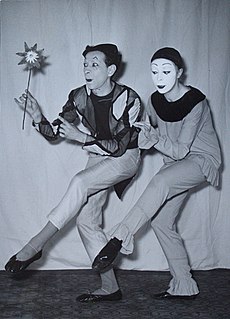 W
WA mime artist or just mime is a person who uses mime as a theatrical medium or as a performance art. Miming involves acting out a story through body motions, without the use of speech. In earlier times, in English, such a performer would typically be referred to as a mummer. Miming is distinguished from silent comedy, in which the artist is a character in a film or skit without sound.
 W
WA monologist, or interchangeably monologuist, is a solo artist who recites or gives dramatic readings from a monologue, soliloquy, poetry, or work of literature, for the entertainment of an audience. The term can also refer to a person who monopolizes a conversation; and, in an obsolete sense, could describe a bird with an unchanging, repetitive song.
 W
WA pit orchestra is a type of orchestra that accompanies performers in musicals, operas, ballets, and other shows involving music. The terms was also used for orchestras accompanying silent movies when more than a piano was used. In performances of operas and ballets, the pit orchestra is typically similar in size to a symphony orchestra, though it may contain smaller string and brass sections, depending upon the piece. Such orchestras may vary in size from approximately 30 musicians to as many as 90–100 musicians. However, because of financial, space, and volume concerns, the musical theatre pit orchestra in the 2000s is considerably smaller.
 W
WA playwright or dramatist is a person who writes plays.
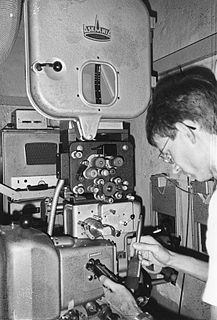 W
WA projectionist is a person who operates a movie projector. In the strict sense of the term this means any film projector and therefore could include someone who operates the projector in a show. In common usage the term is generally understood to describe a paid employee of a movie theater. Projectionists are also known as "operators".
 W
W W
WScenic design is the creation of theatrical, as well as film or television scenery. Scenic designers come from a variety of artistic backgrounds, but in recent years, are mostly trained professionals, holding a B.F.A. or M.F.A. degrees in theater arts. Scenic designers design sets and scenery that aim to support the overall artistic goals of the production. There has been a consideration that scenic design is also production design; however, more accurately, it is a part of the visual production of a film or television.
 W
WTheatrical scenic painting includes wide-ranging disciplines, encompassing virtually the entire scope of painting and craft techniques. An experienced scenic painter will have skills in landscape painting, figurative painting, trompe-l'œil, and faux finishing, and be versatile in different media such as acrylic, oil, and tempera paint. The painter might also be accomplished in three-dimensional skills such as sculpting, plasterering and gilding.
 W
WSet construction is the process undertaken by a construction manager to build full-scale scenery, as specified by a production designer or art director working in collaboration with the director of a production to create a set for a theatrical, film, or television production. The set designer produces a scale model, scale drawings, paint elevations, and research about props, textures, and so on. Scale drawings typically include a groundplan, elevation, and section of the complete set, as well as more detailed drawings of individual scenic elements which, in theatrical productions, may be static, flown, or built onto scenery wagons. Models and paint elevations are frequently hand-produced, though in recent years, many Production Designers and most commercial theatres have begun producing scale drawings with the aid of computer drafting programs such as AutoCAD or Vectorworks.
 W
WThe Shamakhi dancers were the principal dancers of the entertainment groups that existed in Shamakhi up to the late 19th century. These groups worked similarly to tawaifs.
 W
WA showgirl is a female dancer or performer in a stage entertainment show intended to showcase the performer's physical attributes, typically by way of revealing clothing, toplessness, or nudity.
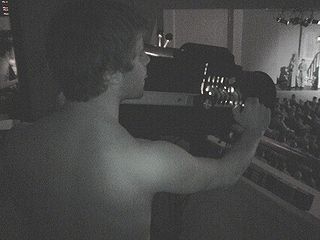 W
WThe spotlight operator or followspot operator is a theatrical technician who operates a specialized stage lighting instrument known as a followspot. A followspot is any lighting instrument manually controlled by an operator during a performance. Generally a followspot will be a dedicated, large lighting instrument designed to pan and change size, beam width, and color easily by hand.
 W
WStage management is a broad field that is generally defined as the practice of organization and coordination of an event or theatrical production. Stage management may encompass a variety of activities including the overseeing of the rehearsal process and coordinating communications among various production teams and personnel. Stage management requires a general understanding of all aspects of production and offers organisational support to ensure the process runs smoothly and efficiently.
 W
WA stagehand is a person who works backstage or behind the scenes in theatres, film, television, or location performance. Their work include setting up the scenery, lights, sound, props, rigging, and special effects for a production.
 W
WA stunt performer, often referred to as a stuntman or stuntwoman, is a trained professional who performs daring acts, often as a career. Stunt performers usually appear in films or on television, as opposed to a daredevil, who performs for a live audience. When they take the place of another actor, they are known as stunt doubles.
 W
WA theatre director or stage director is a professional in the theatre field who oversees and orchestrates the mounting of a theatre production such as a play, opera, dance,drama, musical theatre performance etc. by unifying various endeavors and aspects of production. The director's function is to ensure the quality and completeness of theatre production and to lead the members of the creative team into realizing their artistic vision for it. The director thereby collaborates with a team of creative individuals and other staff to coordinate research and work on all the aspects of the production which includes the Technical and the Performance aspects. The technical aspects include: stagecraft, costume design, theatrical properties (props), lighting design, set design and sound design for the production. The performance aspects include: acting, dance, orchestra, chants, and stage combat.
 W
WAn usher is a person who welcomes and shows people where to sit, especially at a church, theatre or when attending a wedding.
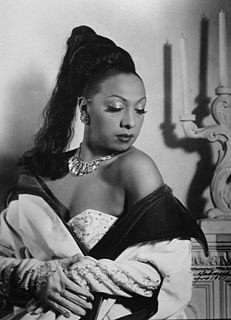 W
WA vedette is the main female artist of a show derived from cabaret and its subcategories of revue, vaudeville, music hall or burlesque. The purpose of the vedette is to entertain and captivate the public. The vedette has to know how to sing, dance and act on stage. Particularly accomplished artistes are considered super vedettes or first vedettes. Vedettes often appear alongside groups of dancers, flashy and revealing costumes, magicians, comedians, jugglers, or even performing animals. Vedettes specializing in burlesque generally do striptease and may also perform nude on stage.
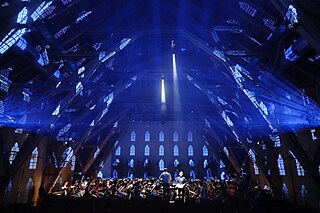 W
WVideo design or projection design is a creative field of stagecraft. It is concerned with the creation and integration of film, motion graphics and live camera feed into the fields of theatre, opera, dance, fashion shows, concerts and other live events. Video design has only recently gained recognition as a separate creative field. Prior to this, the responsibilities of video design would often be taken on by a scenic designer or lighting designer. A person who practices the art of video design is often known as a Video Designer. However, naming conventions vary around the world, and so practitioners may also be credited as Projection Designer, "Media Designer", Cinematographer or Video Director. As a relatively new field of stagecraft, practitioners create their own definitions, rules and techniques.
 W
WThe wardrobe supervisor is responsible for overseeing all wardrobe related activities during the course of a theatrical run or film shoot. The modern title "wardrobe supervisor" has evolved from the more traditional titles of "wardrobe mistress/master" or "mistress/master of the wardrobe". The wardrobe supervisor may be present at some production meetings and fittings, their primary responsibilities generally begin at the load-in stage of a production and during prep of a film. At load-in physical custody and responsibility for the costumes shifts from the costume designer and shop staff to the wardrobe supervisor.
 W
WA West End theatre producer is a theatre producer who causes theatrical productions to be presented in one or more of the 40 West End theatres of London, as defined by the governing body of West End producers, The Society of London Theatre.